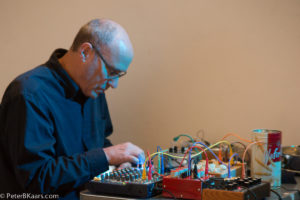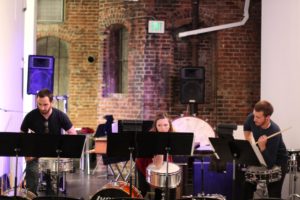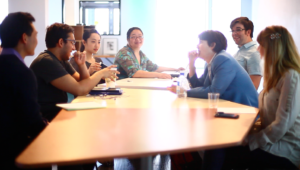Among the many paradoxes of my life, the thorniest might be this idea: a not-for-profit business. In order to take the leap of launching the Center for New Music, my co-founder Brent Miller and I needed to have faith in two separate but related ideas: the mission of the Center, and the business model of the Center.

Business idea: The space should pay for itself.
In the context of the mission: Some uses are better than others.
Perhaps the most important element of our business model is the premise that uses of the space cover the basic costs of rent, utilities, and maintenance. From the homework we did in talking with musicians, producers, and our community of music organizations, we realized that we’d have to be quite flexible in our offerings. People need workspace, rehearsal space, performance space, storage space, meeting space, hangout space… short of creating a mini-campus, we quickly realized we would need a facility that could accommodate a lot of different uses.
This is where support for tenant improvements makes the whole thing possible (more about that in a future blog). But even once we’re capable of hosting all of these uses, some will fit better than others. The performance space may suit some groups better than others. The collaborative workspace may be great for some types of work, but too distracting for others. In the first few years we’ll be in startup mode, finding what we can accommodate, and how we can develop each offering to meet our goal of having the earned revenue from facility uses support basic overhead.
But, perhaps more importantly, the MUSIC! What are we open to? Who is welcome and who is not? Let’s get back to “business” as a way through this question.

In business terms: New music is a business that needs investors to help bring its products to market.
The incredible real estate boom in San Francisco is completely reshaping (and re-pricing) our city, so it should come as no surprise that affordable space is something artists at every level desperately need right now.
Our theory, though, is that no matter the real estate conditions, artists who are interested in something “new” (I know, loaded word—another future blog post) need a space where they can test their “new” ideas in the context of a creative community. Some ideas will bear fruit and some won’t, some will be hated by audiences but satisfy the artist, and some the opposite. What’s important is the space and the community that supports creating, testing, building, and developing those musical ideas and programs (products).
In other sectors these activities might be called product development, market research, incubation, beta testing… you get the idea. But for us, the payoff at the end can vary wildly. Maybe there will be a platinum album we help develop; or maybe a performance will change just one person’s life in a positive way. We believe that those results (markets?) are both worthy of investment. We also believe that the opportunity to test out new ideas should not be contingent upon which type of result might be possible.
This is why we have built into our business model that artists receive 100% of door revenue from their performances. Assuming the space pays for itself, and artists receive all the income once their work is presented, that leaves just personnel.

Is a community center a business?
And here we come to the part that makes the Center a not-for-profit venture. Obviously none of the above can happen without a lot of elbow grease, from the artists who are developing their work to the staff that schedules and promotes them, the techs and managers who run the shows, and the program managers and strategic thinkers who align all of these activities to work in an efficient and effective way.
The main challenge of building the Center is in piecing together so many disparate resources, and organizing them into a functioning artistic ecosystem. This is why we are building more than a venue, and more than a shared office—we are building a “community center.” Our mission does include artistic excellence, but equally focuses on the growth of our community. The final element to the plan is contributed income, whether from government, corporations, foundations, or individuals. We are counting on those people and institutions who have a stake in the future of musical creativity to be investors in this work. Their investment will be one of many other types of investments that make the Center function: an artist’s time and vision, a volunteer’s time, a member’s annual fee, an organization’s rental fees.
Together all of those elements constitute an integrated community that, we believe, will continue to grow, evolve, and produce wonderfully valuable products and services… also known as music.